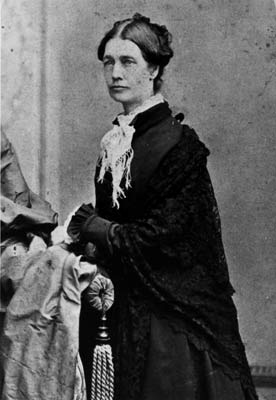‘Who is responsible for setting up Santa Barbara’s first library?’
-Ellen Zelinsky

It is hard to imagine in today’s Santa Barbara, with its wealth of libraries and bookstores, that there was a time when books were somewhat scarce. That was the situation, however, when Sara Plummer arrived in late 1869.
Born in Maine in 1840, Plummer received her higher education in Massachusetts, then taught art in New York. The harsh New York winters resulted in Plummer coming down with pneumonia. A friend who had restored his health in Santa Barbara told her about the city, and in fall 1869, she began the long trip to California. After her arrival, during long walks in and around the town, she became fascinated by the variety of plants here and began assiduously collecting specimens for further study. Botany became a life-long interest, and her paintings of plants would come to be nationally renowned.
One incident marred her early months here. In July 1870 she was thrown from her carriage in the hills above Montecito. Her injuries were serious enough that one newspaper even reported her death. She ended up making a complete recovery.
Being a person of education, Plummer was disturbed by the dearth of reading material here. She contacted an acquaintance, Unitarian minister Henry Bellows, for advice. Bellows not only favored her with advice but also sent along 200 books to start a lending library. Plummer collected another 200-plus works, and in March 1871, she opened the Lending Library and Stationery Depot in Israel Miller’s State Street jewelry store. Plummer charged a library subscription of $5, although those who found this a bit steep could pay 10 cents whenever they checked out books.
The library was linked to Plummer’s retail establishment, where greeting cards were an especially popular item. One newspaper noted of the Valentine’s Day selection that “some are exceedingly pretty,” while others were “extremely ridiculous.” Plummer soon added sheet music, school and art supplies, toys, and Asian imports to the store’s stock. Plummer’s establishment became a cultural center for the town with offerings of art exhibits, lectures, and readings.
In 1880, Plummer married John Gill Lemmon, and she sold her library to the Odd Fellows to operate. A teacher and botanist, Lemmon came to California shortly after the Civil War and arrived in Santa Barbara in 1876 to study local plant life. He traveled throughout southern California, returning here from time to time. Gill and Plummer undoubtedly discovered each other through their shared interest in botany.
The couple took a botanical honeymoon to the Santa Catalina Mountains in Arizona. They took up residence in a small cabin that reportedly had previously belonged to a horse thief. The only window was a hole in the wall which could be “closed” by stuffing paper into it. The pantry was a cracker box; the door was made of barrel staves. The nearest water was three-quarters of a mile away. Gila monsters, snakes, and bandits were just some of the hazards they faced.
Mrs. Lemmon continued to paint her botanical subjects, displaying them across the country. She was the official artist for the California State Board of Forestry and authored the bill that made the poppy the state flower. She wrote a number of works on botany and edited a history concerning the work of the Red Cross on the West Coast. The couple’s large botanical collection would eventually be given to UC Berkeley.
Sara Plummer Lemmon died in 1923, remembered in the botanic world by the several plants named in her honor. She is remembered locally for bringing Santa Barbara its first library.



